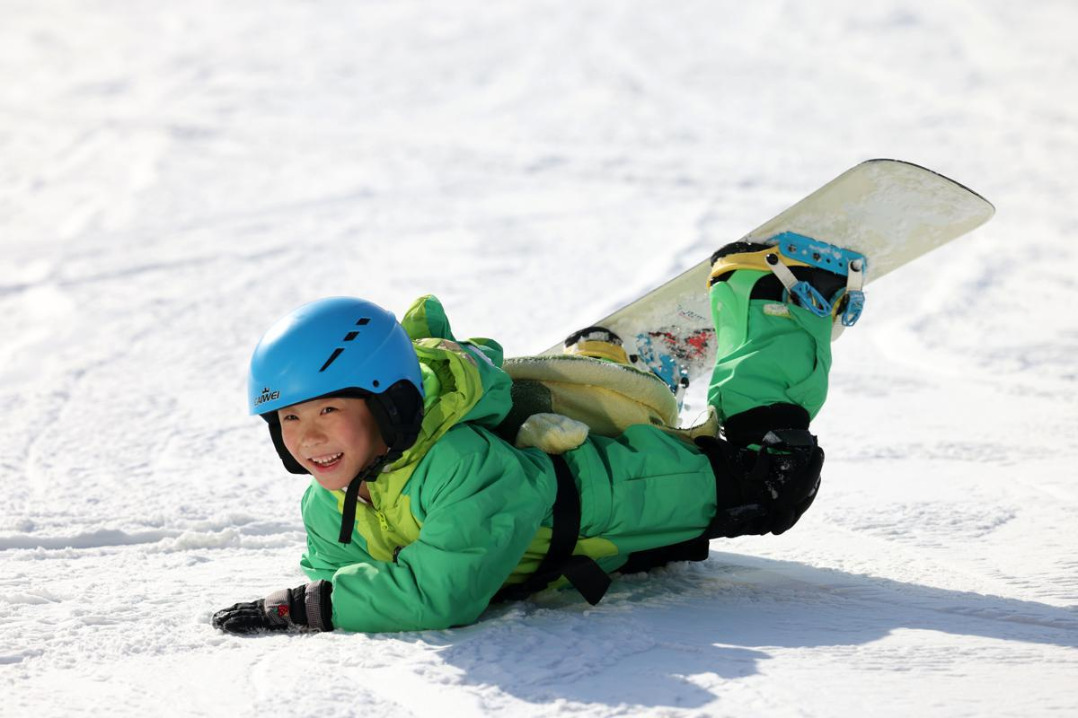Singapore tackles second-wave cases
By Pan Mengqi | China Daily | Updated: 2020-04-15 09:55
Approach praised

By adopting aggressive methods, the government managed to keep the number of cases low and was able to track them.
On March 10, World Health Organization chief Tedros Adhanom Ghebreyesus praised Singapore's "all-government approach" in containing COVID-19.
The previous month, Tedros said the WHO was very impressed with the efforts made by Singapore to find every case, follow up contacts and stop transmission.
Since the first case was reported in Singapore, three words-trace, detect, isolate-have been the cornerstone of its fight against COVID-19. The nation has been meticulous in tracing confirmed cases and identifying people who may have been exposed to the virus.
The government has launched an app that alerts users if they have been in close contact with a confirmed case. Called TraceTogether, the app exchanges short-distance Bluetooth signals with other users, providing officials with a database to track potential COVID-19 carriers.
Leong Hoe Nam, an infectious diseases specialist at Mount Elizabeth Novena Hospital in Singapore, said the app has helped the authorities slow the spread of the disease and track all possible cases promptly.
Mass testing is being carried out. Infected patients are hospitalized and people who have had contact with a patient are quarantined. Awareness of social distancing is also being promoted by the government and the media.
These efforts helped contain the virus in Singapore for about two months, but the situation changed after 47 cases were traced to a dinner held on Feb 15.By the middle of last month, the country had some 400 confirmed cases, but no deaths. As of Tuesday, Singapore had 2,918 confirmed cases and nine deaths.
The rising numbers show how COVID-19 can spread-even after initial success in containing the virus-if people do not practice proper safety precautions.
Disease experts said breaches in Singapore's lauded virus defense efforts underline the challenge of containing the pandemic globally.
According to officials, the surge in the number of confirmed cases in Singapore stems from two groups: thousands of people who returned from overseas; and hundreds of thousands of migrant workers from South Asia.
Singapore is now in the grip of what experts term "second-wave infections".
Initially, many of the cases involved people returning to Singapore who contracted the virus overseas, mostly in Europe. However, in recent weeks, there has been a worrying rise in locally transmitted cases.
As the gravity of the outbreak became clear globally, thousands of people returned to the Lion City-including more than 500 who unwittingly brought the virus with them.
At the time, only those with COVID-19 symptoms were required to stay home for two weeks. According to some observers, it was a mistake not to limit interaction among returnees. But experts said this was "hindsight", as people now know a lot more about the disease compared with the knowledge they had of it only last month.
Foreigners account for more than one-third of Singapore's workforce, and over 200,000 migrant workers in the country are from Pakistan, Bangladesh and other Asian countries. They live in 43 registered dormitories across the country.
In recent weeks, multiple clusters of confirmed COVID-19 cases have been found in the often-cramped dormitories.
The authorities have placed quarantine orders on four dormitories, with workers told to stay in shared rooms for 14 days. They are still being paid and are receiving deliveries of food and other necessities.
It is estimated that some 50,000 workers are under quarantine. The largest dormitory, Sungei Tengah Lodge, comprises 10 residential blocks and can house up to 25,000 workers.
More than 450 infections have been linked to the dormitories, which mainly house workers from Bangladesh and India, according to the Singaporean Ministry of Health.
























